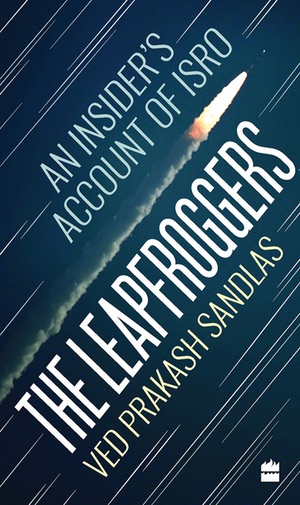Review: The Leapfroggersby Jeff Foust
|
| Told that everything was going well and without any confusion, Abdul Kalam responded, “Come on then, let us create some confusion,” and the two then went and quizzed workers on various aspects of their work. |
In The Leapfroggers, Sandlas joins the Indian space program in the late 1960s, working on sounding rockets at the Thumba Equatorial Rocket Launching Station. This leads to work on the SLV-3 rocket, which in July 1980 became the first Indian rocket to place a satellite in orbit (India’s first satellite had been launched on a Soviet rocket a few years earlier.) Sandlas would later go on to run the SLV-3 program through its final few launches as the country transitioned to larger vehicles, including the Polar Satellite Launch Vehicle (PSLV) that is the country’s primary launch vehicle today and the more powerful Geosynchronous Satellite Launch Vehicle (GSLV).
Like Aravamudan’s book, The Leapfroggers is not a thorough, academic history of India’s space program but rather a memoir filled with anecdotes—including many humorous ones—about his work and life. Some of the more interesting ones involve his work with A.P.J. Abdul Kalam, who initially managed the SLV-3 program and would have a long career with Indian space and missile efforts before becoming president of India late in life. “Accurate scheduling was never a priority for Abdul Kalam,” he recalls, noting complaints by some involved with the project for work, such as “unscheduled day-night forced activities.”
On another occasion, Sandlas recalled Abdul Kalam showing up one night and asking how preparations for an upcoming SLV-3 launch were going. Told that everything was going well and without any confusion, he responded, “Come on then, let us create some confusion,” and the two then went and quizzed workers on various aspects of their work. Sandlas endorsed this management approach where “problems should be deliberately triggered to become visible and propagate, so as to find optimal solutions.”
The title of the book comes from comments made by the founder of India’s space program, Vakram Sarabhai, who said country needed “the courage to leapfrog to state-of-the-art engineering and technology pursuits rather than [make] step-by-step scientific developments.” One can argue that India’s space program has followed more of a step-by-step approach: SLV-3 served as the basis for future launch vehicles with gradually increasing performance, whose development (particularly regarding variants of the GSLV) has taken longer than expected. India may not have leapfrogged its way to being one of the leading nations in spaceflight, but some of the early efforts chronicled in The Leapfroggers were essential to the country’s later achievements in space.
Note: we are temporarily moderating all comments subcommitted to deal with a surge in spam.
